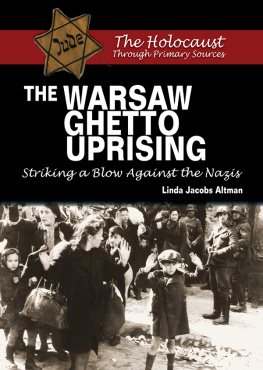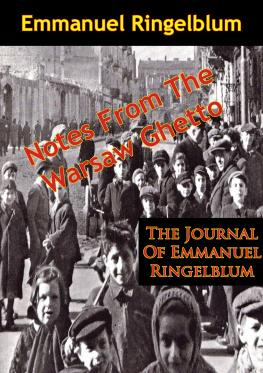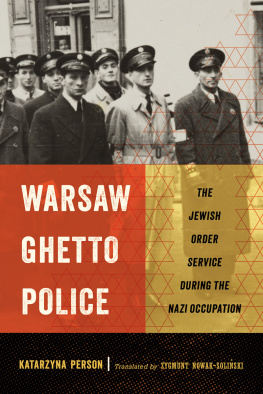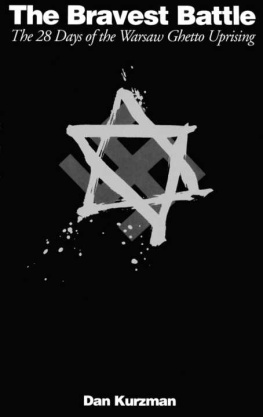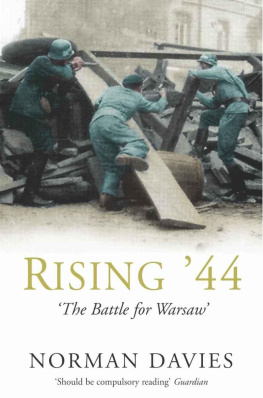
Mary Berg as a young woman. This photo
was among four albums and a scrapbook
purchased by Glen Coghill at an estate sale in
Pennsylvania, USA, 2014

75th Anniversary Edition
Edited By S.L. Shneiderman
Prepared By Susan Pentlin, PhD

CONTENTS
ACKNOWLEDGMENTS
I have been interested in and working with Mary Bergs diary since the mid-1980s. In the process, I have looked for, met and been helped by many people in the United States, Great Britain, Germany, Poland and Israel. Many have become friends. I would especially like to thank James A. Fox, former Editor-in-Chief of Magnum Photos in New York and Paris for thirty years, and retired photo curator and historian, for the time and effort he spent helping me to understand the Vittel internment camp. He met the Shneidermans in Paris at Magnum. Eileen Shneidermans brother, the photographer David Seymour, was one of the founders of Magnum. I also appreciated the opportunity to interview Gutta Eisenzweig Sternbuch and David Kranzler in February 2006.
I want to give special thanks to Eileen and S. L. Shneidermans children, Ben Shneiderman and Helen Sarid, and to Rochelle Saidel for their advice and encouragement, to Sylvia Glasss sons, Walter and David Goldfrank, and to Moira Hyle, the daughter of Norbert Guterman. I also want to thank: Alan Berger; Alice Eckhard; Anna and Tamas Adamik, Budapest; Batia Gilad, the Janusz Korczak Archive at the Ghetto Fighters Kibbutz; Jenny Manuel, the American Jewish Archive; Krystyna Freijat, Secretary to Rev. Dr. Edward Puslecki, the General Superintendent of the United Methodist Church of Poland; Mark Shenise, of the General Commission on Archives and History, the United Methodist Church; Marianne Sandig, Berlin; Megan Lewis, USHMM Survivor Registry; Moishe Shubinsky, England; Monica Kulp, daughter of Gaither and Halina Warfield; Robert Giliank; Roman Zakharii; Ryszard Maczewski, Warsaw; Shelly Shapiro, Holocaust Friends and Survivors Education Center, Latham, NY; Serge and Beate Klarsfeld, Paris; Vanesa Chappell, Interlibrary Loan at Central Missouri State University; Central Missouri State University for the 1993 Faculty Research grant for research at the National Archives, and, as always, my husband Floyd C. Pentlin.
I want to remember my loving mother Jean Riddle (19192001), who wanted her children to learn how to think clearly, and my grandmother Addie Gillum Flanery (18931974), who was my English teacher in junior high and who had a deep appreciation and understanding of the English language. I also want to remember translators Norbert Guterman (19001984) and Sylvia Glass (19122006) for their efforts to bring this historical document to the public in 1945. I remember the interesting and lively telephone conversation I had with Sylvia Glass Goldfrank shortly before she passed away in January 2006.
As editor, I dedicate my work to the memory of S.L. Shneiderman, who played such a crucial role in ensuring that this important record of the Warsaw Ghetto was brought to public attention in 19445. He grasped its significance to the survival of the Polish Jews, and to history, working closely with Mary Berg and arranging for the diarys translation, serialization, and eventual publication in wartime New York. He was born in Kazimierz, Poland, in 1906 and died in Israel in 1996. I would also like to include in this dedication his wife and collaborator, Eileen Shneiderman, who was born Eileen Szymin in Warsaw, Poland in 1908 and passed away in Israel in 2004. Samuel Shneiderman lost his parents and two brothers and their families, eleven in all, in the ghetto of Opole, and Eileen Shneiderman her parents in the Otwock Ghetto. Together they formed an inspiring team as writers. They came to the United States in 1940, and devoted their lives to preserving the rich, cultural world of Polish Jews and the Yiddish language, which the Nazis attempted to destroy. I regret they did not live to see this diary come back into print.
SUSAN PENTLIN
PREFACE TO 1945 EDITION
Tell ye your children of it,
And let your children tell their children,
And their children another generation.
Joel, 1.3.
The walled Jewish quarters set up by the Nazis in Poland were intended to humiliate and torture the Jewish people. Today, these ghettos lie in ashes, after the Jews had converted them into citadels of resistance. In Warsaw, Bialystok, Bendzin, and Czestochowa, the Jews, men, women and children, armed with obsolete weapons, rose against the Nazi armored battalions. No ammunition was parachuted to these isolated fighters, not even during the Battle of Warsaw ghetto, which lasted for forty-two days. The heroic struggle and the sufferings of the Jews in the Polish ghettos constitute one of the most tragic and least known chapters of the war.
The term ghetto itself is a Nazi lie, for there can be no comparison between the Warsaw ghetto and others created by the Nazis in Poland, and the medieval ghettos, whose walls occasionally served as a protection to the Jews who lived within them. From the beginning, the modern ghettos served the enemy as death traps.
Paradoxically, the world that had given credence to the Nazi lies refused to believe in Nazi crimes. To this day there are liberals who refuse to believe that the Nazis have murdered almost six million Jews in Europe. They regard the revelations about gas chambers, crematoria, and bacteriological experiments performed on hundreds of thousands of Jews as products of anti-German propaganda.
The Nazis counted on this. They knew that the greater the crimes, the less credible they would appear.
People outside Poland had a completely false picture of the conditions within the isolated Jewish quarters in Poland. Abroad, it was imagined that the Jews were a mass of human beings apathetically awaiting slaughter. That this picture was erroneous, we learn from Mary Bergs diary, the first complete chronicle of the establishment and destruction of the Warsaw ghetto written by a witness without any political party bias.
At the beginning of the German occupation, the Jews themselves had no conception of the fate in store for them. They did their best to preserve their ways of life and, with them, the inevitable social distinctions which had prevailed before the occupation. Thus conditions in the ghetto naturally mirrored the life outside. In course of time, under the hardships of Nazi rule, solidarity among all classes of Jews grew. The Nazis deliberately squeezed into an area formerly occupied by about one hundred thousand people a heterogeneous group of six hundred thousand Jews from all the occupied territories. These Jews, of various cultures and ideas, flung into a pit of hunger, disease, and terror, succeeded in organizing a kind of community existence.
As would be true among any other groups, those who had reserves of cash or valuables managed to survive longer than the less fortunate. Underground trade with the so-called Aryan side continued, sometimes with the connivance of the Nazis themselves, who used these opportunities for acquiring valuables in return for worthless German marks. Through secret channels the Jewish fighting organizations got their meagre stores of arms; the funds for these arms came, to a considerable extent, from the wealthier Jews, some of whom paid willingly, while others contributed under pressure from the Jewish underground.
When Mary Berg was imprisoned in the Warsaw ghetto, she was barely sixteen years old. Events matured her quickly. As the daughter of an American citizen, she belonged to a tiny privileged group. The American flag on her lapel and another on the door of her apartment protected her like a talisman against the enemy. She was among those who suffered least, although, day after day, she was shaken by the tragedies of her schoolmates, neighbors, and family.
Next page

